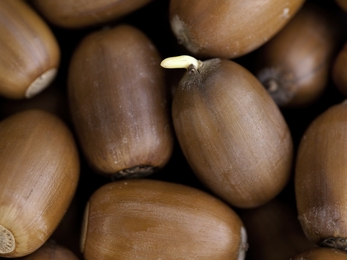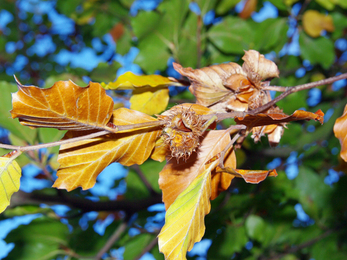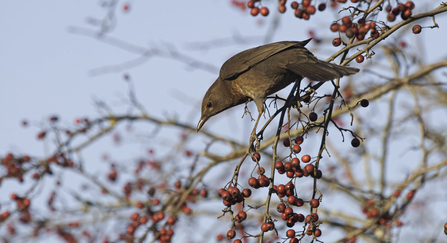A Mast Year
Every 5-10 years trees in our native woodlands, mainly oak and beech, produce unusually high amounts of their seeds – known as a mast year. Perhaps you have noticed lots of acorns or the triangular beech nuts (known as mast) on the forest floor on a walk recently. Here in Hampshire, beech woodland is looking especially stunning as the leaves turn to shades of orange – so look out for mast when you visit.
Each year the amount of seeds produced by a tree varies hugely – sometimes it can be hard to find more than one conker or acorn, while other years they litter the floor of a woodland.
In years when production is low the birds, including jays, magpies and corvids, and mammals such as mice and squirrels, that depend on these nuts and seeds for high-calorie nutrition in winter, largely go hungry. In a mast year the food source is so abundant that they cannot possibly eat them all! This leaves lots of acorns, beech mast or pinecones, to germinate and renew our woodlands as well as lots of well-fed wildlife.




